Why gas burns red flame on the stove: factors affecting the color of the flame
Over time, the use of a gas stove, many notice how the color of the flame changes from blue to some other. The question arises: what color should the gas on the stove be during normal operation of the equipment? Is it normal that it burns not in blue, but in some other color? And in what cases, a change in the color of the flame indicates serious problems.
Indeed, a change in the color of the flame almost always indicates a problem. But most of them can be solved independently and not even call special services. Consider why the gas sometimes burns with an orange rather than a blue flame, and how to fix this problem.
The content of the article:
Causes of flame color change
Gas equipment refers to unsafe household appliances. On the one hand, the user should not interfere with his work and violate the design of the stove, try to repair it on their own.
On the other hand, it is important to know the possible signs of breakdowns and to respond to them in time so as not to exploit the cooking surface that has failed.
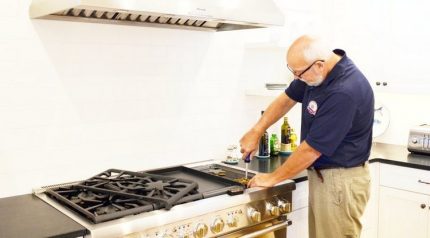
One of the simplest signs of problems in the operation of the stove is the color change of the fire. Normally, it is blue, but sometimes it can turn orange, red, yellow, have a pungent and unpleasant odor.
An important condition for the normal combustion of gas is the required amount of oxygen. There is a certain proportion that must be observed so that combustion is as useful as possible for the user.
Causes of flame color change:
- incomplete combustion of gas;
- the wrong amount of air in the mixture (insufficient or excessive);
- burner contamination;
- unsuitable equipment;
- low-quality gas.
There is an opinion that a change in the color of the gas indicates a poor quality of the supplied fuel. Allegedly, it is diluted with various substances so that the consumer pays more for the service.In fact, the color of the fire indicates only how correctly the combustion process is carried out.
Thus, a uniform blue color indicates complete combustion of the gas with the extraction of the maximum amount of heat.
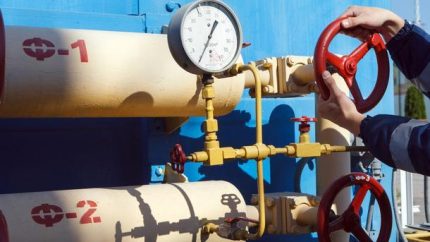
But the supply of low-quality gas cannot be ruled out. This does not affect the color of combustion itself, but low-quality gas in the future worsens the operation of the stove and leads to the appearance of a yellow flame.
After the stove has worked, black soot may collect on it. All this indicates that the flame smokes. This indicates a violation of gas injection. When the burners work, there is a lack of a gas mixture. This is why gas sometimes burns with a red or yellow flame on a stove.
It is necessary to look for the cause, first of all, in burner contamination, ventilation problems, etc. The higher the combustion temperature, that is, the more gas is saturated with oxygen during combustion, the colder the shade of the flame.
Yellow flame
The air-fuel mixture becomes unusable and changes color for various reasons. The most common - holes designed to suck in air are clogged. Dust gets into them, which prevents the free passage of air.
This problem is especially relevant in the early years of using gas equipment. It is then that you need to most often subject it to verification. This is due to the fact that after stamping on the burner and tube of the ignition group, a small oil film is retained for the first time. This leads to dust sticking to its surface, which prevents the ingress of a normal amount of air. Gas in this case passes in the same amount.
The composition of the mixture changes, and this becomes the reason why the gas burns in orange or yellow in the stove, and not in traditional blue or blue.
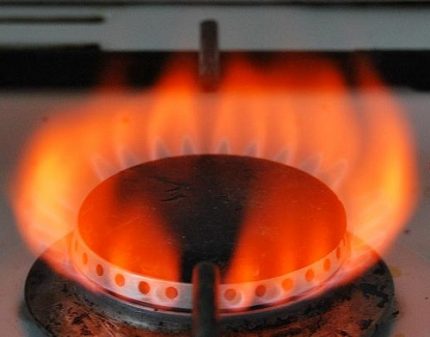
It is important to understand that changing the color of the flame is not the only sign that it is time to clean the stove.
Other indicators are as follows:
- flame smokes;
- the fire becomes an opaque shade;
- the torch is getting too big;
- the torch becomes luminous.
This all indicates the need to call the master to clean the burners, their various elements and adjust the operation of the stove so that the air is supplied evenly.
Another common reason for the color of the gas flame to turn yellow is that the air damper is in the wrong position to control the air supply. It can be closed, jump off, fall, etc. This causes a lack of air, which leads to loss of heating, the appearance of soot, yellow flames and other problems. Often this ends even with the need to make an urgent repair of the stove.
Flame burns red
Sometimes the gas can burn even in red. The reason for this phenomenon is an excess of carbon monoxide, which accumulates as a by-product of the combustion of any fuel. If the gas burns with a blue flame, then the gas equipment is fully operational and emits a small amount of carbon monoxide.
If the color changes closer to red - this poisonous substance becomes more and more. This is quite dangerous, because excessive concentration leads to headache, nausea, dizziness and other signs of poisoning.
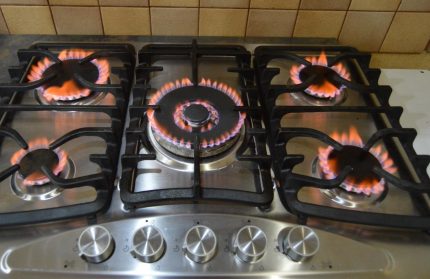
The problem with carbon monoxide is that it is odorless and colorless. Therefore, the color of the flame is the only way to recognize an increase in its concentration.
Even small concentrations of this substance (0.01-0.2%) lead to severe symptoms.
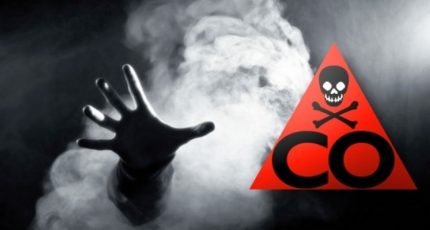
If the gas concentration reaches large values, then this can cause more serious poisoning and even death.
What color should the gas burn?
So, in order for the gas to burn as completely as possible and the necessary amount of energy to be released, it is important that there is enough air in the gas mixture. This is achieved by mixing the oxygen and the burning gas in the burner in the right proportions: 10 liters of air are needed per 1 liter of burning gas.
Then the pan or pan will heat up quickly enough, because a lot of heat will be released from the burner. Complete combustion of gas ensures the normal evolution of heat, a certain amount of light during the formation of carbon dioxide and water vapor.
This is evidenced by such signs:
- silent burning of gas;
- blue color of a flame;
- uniform distribution of flame on all sides of the burner;
- sufficient level of fire;
- firing without popping;
- no cessation of combustion at the minimum value of the flame power regulator.
If there are any obstacles to air, gas combustion is incomplete. Oxidation in the insufficient presence of air leads to the formation of carbon monoxide (or carbon monoxide), due to which the color changes to yellow or even red.
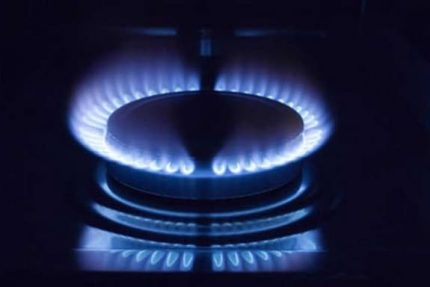
If too much natural gas enters the burner, improper fuel consumption starts, which causes soot formation in the burner. Heating decreases, which leads to an increase in the duration of cooking, and on the underside of the dishes black marks begin to appear after being on the gas stove. All this points to gas burner problems and the need for urgent cleaning.
We also recommend that you read our other channels, where we talked in detail about possible problems with gas burners and how to solve them:
- The noise of the gas burner.
- Increase the power of the gas burner.
- The gas burner does not hold a flame.
- The hotplate does not work on the gas stove.
Troubleshooting color changes
The most common mistake that gas equipment users often make is the purchase of inappropriate equipment.
Some products are suitable for only one type of gas, and may be used in another. Then it is also possible to change the color of the flame.
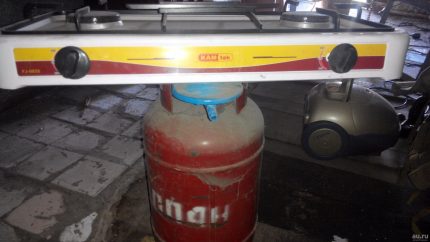
For example, a household appliance can run on propane. It needs a slightly different proportion of gas and air than natural gas. Therefore, before purchasing a stove, it is important to ask whether it is intended for the gas mixture that you will use.
So, if the color of the gas flame has changed to yellow, orange or red, first of all, it is necessary to recognize the presence of danger. Many people begin to blame everything on low-quality gas, on the problems of the supplier, but most often the reason is in the burners themselves.
It is important to find the source of the color change and troubleshoot. If you cannot do this yourself, it is recommended that you contact the company with which you have maintenance contract concluded gas equipment. They will carry out diagnostics, repair the device if necessary.
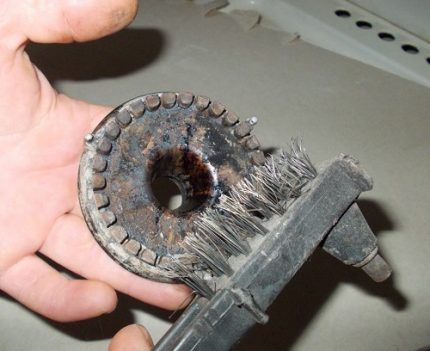
It is also important to take preventative measures.Most often, the gas changes color due to the fact that the burners inside are clogged with household dust, food debris. If you use the stove more carefully, do regular cleaning, you can avoid getting unnecessary objects inside the burner. This is an effort that absolutely every user can make.
Cleaning can be done using special detergents. Do this when the burners have completely cooled down.
Try to follow these cleaning rules:
- clean enameled and metal surfaces without the use of abrasive cleaners;
- do not use chlorine-based cleaners;
- clean glass-ceramic surfaces with soapy water;
- Use a stiff bristle brush for the holes themselves.
In conclusion, they wipe the cleaned plate with a dry rag, wait until it dries, and try to light the gas.
If cleaning the burners did not correct the situation, and the gas is still orange, then there is only one way out. Immediately you need to contact a specialized service center that deals with the repair of gas equipment.
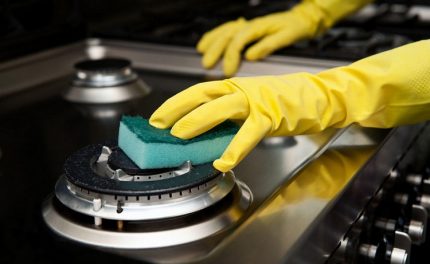
If you do not know how to disassemble and clean them, you can look in the instructions for your gas stove. Methods for cleaning these mechanisms should be described there. In addition, it is important to keep the entire stove clean, even its most remote parts from the fire. Indeed, in some cases, pollution from those places can be accidentally transferred and fall under the damper.
Most of the recommendations described above may seem elementary and frivolous at first glance. Many people think that they handle their stove normally and control the situation. In fact, completely different processes can occur inside the slab.
Dust that you did not remove immediately, then gets into the burner, where it is melted and charred. And in this case, it becomes very difficult to clean it. And if you continue to operate the household appliance in such a manner, its condition will deteriorate more and more. Ultimately, this will lead to a complete failure.
Do not delay contacting gas services and specialists. If the stove systematically malfunctions, it needs repair. Preventive examinations from specialists will also be useful.
In addition, one should not neglect safety regulations gas equipment, because even the slightest mistake can lead to sad consequences.
Conclusions and useful video on the topic
It is not always possible the first time to figure out how to clean the gas burner from scale and dirt. The video below offers detailed instructions on how to do this:
So, the normal color of the gas flame is blue. If your burners burn differently, this is an occasion to clean them or call a specialist for a more complete diagnosis. Do not drag out this question, because not just the color of the flame is changing, but the composition of the combustion products.
Carbon monoxide accumulation can lead to undesirable consequences. Therefore, gas safety issues must be addressed first.
Have you ever encountered a color change in a flame? How did you act in such a situation? Leave your comments, share experiences, ask questions - the communication block is located under the article.

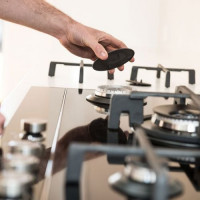 Why the burner does not work on the gas stove: common causes and methods for eliminating them
Why the burner does not work on the gas stove: common causes and methods for eliminating them 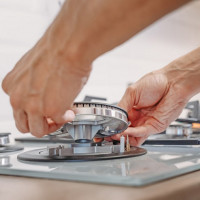 Why piezo ignition on a gas stove does not work: causes of breakdowns and methods for their elimination
Why piezo ignition on a gas stove does not work: causes of breakdowns and methods for their elimination 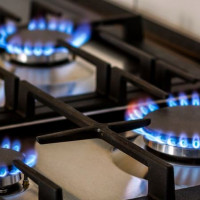 How to increase the power of the gas burner and improve the flame on the stove: an overview of popular ways
How to increase the power of the gas burner and improve the flame on the stove: an overview of popular ways 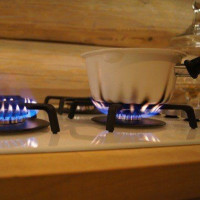 Why smokes a gas stove with a propane tank: basic breakdowns and troubleshooting tips
Why smokes a gas stove with a propane tank: basic breakdowns and troubleshooting tips 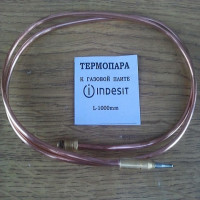 Thermocouple in a gas stove: principle of operation + instruction on replacing the device
Thermocouple in a gas stove: principle of operation + instruction on replacing the device 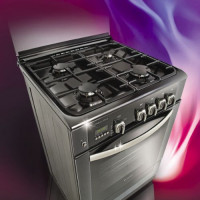 How to light an oven in a gas stove “Hephaestus”: ignition rules and the principle of operation of a gas oven
How to light an oven in a gas stove “Hephaestus”: ignition rules and the principle of operation of a gas oven  How much does it cost to connect gas to a private house: the price of organizing gas supply
How much does it cost to connect gas to a private house: the price of organizing gas supply  The best washing machines with dryer: model rating and customer tips
The best washing machines with dryer: model rating and customer tips  What is the color temperature of light and the nuances of choosing the temperature of the lamps to suit your needs
What is the color temperature of light and the nuances of choosing the temperature of the lamps to suit your needs  Replacement of a geyser in an apartment: replacement paperwork + basic norms and requirements
Replacement of a geyser in an apartment: replacement paperwork + basic norms and requirements